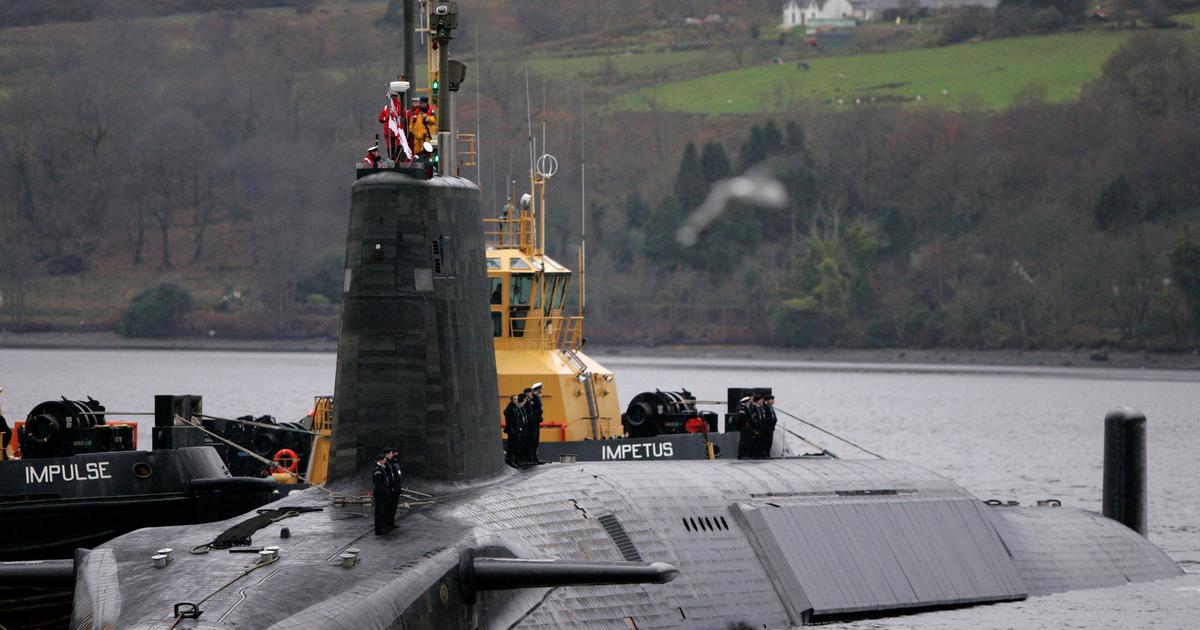The Royal Navy has definitely had one series of disappointments.
An unarmed Trident II nuclear missile test failed off the coast of Florida, British daily The
Sun
reported Tuesday evening .
The British Ministry of Defense confirmed a
“malfunction”
during an exercise off the coast of Florida on January 30, ensuring that nuclear deterrence nevertheless remained
“effective”
.
The 58-ton missile would have been successfully propelled from the submarine HMS Vanguard, the lead unit of its class, by a compressed gas system.
But once in flight, the thrusters of its first stage would not have started, causing the fall of the missile which crashed in the ocean, next to the submarine.
“He left the submarine and fell right next to it,”
said
a source cited by
The Sun.
No further details have today been made public for reasons of
“national security”
.
“For reasons of national security, we cannot provide further information on this matter, but we are confident that the anomaly was event specific and therefore has no implication on the reliability of the systems. Trident missiles and their stock more widely
,” the ministry told the British newspaper in a statement.
"The UK's nuclear deterrent remains safe, secure and effective"
.
Also read: Simon, the Royal Navy's onboard cat
The SNLE (nuclear ballistic missile submarine) which was operating under the surface was, however, not affected.
An investigation was launched to understand the origin of this failure, and above all to recover from the seabed the debris of the missile, the technology of which is carefully protected.
20 million euro missile
The Trident missile was to travel nearly 6,000 kilometers from the coast of Florida to the middle of the Atlantic.
This “
SLBM
” (“
submarine-launched ballistic missile
” in English) has a range of approximately 12,000 kilometers and can carry several Holbrook nuclear warheads of 100 kilotons each (in TNT equivalent, compared to 15 kt for the Hiroshima bomb ).
It can reach 21,000 km/h and is designed to escape the atmosphere.
Missiles of this type entered service with the US Navy in the early 1990s before the Royal Navy adopted them.
The manufacturer Lockheed Martin presents them as
“the most advanced ballistic missiles in the world”
and recalls that the Trident II had been successfully tested more than 191 times, with a last test in September by an American submarine in the Pacific.
The Royal Navy, for its part, limits testing.
Each missile costs nearly 20 million euros.
Multiple disappointments
The Royal Navy therefore nevertheless failed a second test, seven years after the failure in 2016 of the firing of a Trident II missile from HMS Vengeance.
The thrusters had ignited, but the missile had deviated from its trajectory, heading towards the United States and therefore causing its automatic destruction.
The British press also revealed at the end of last year a “worrying” malfunction during the dive of one of its nuclear submarines.
The incident, about which little information has emerged, is believed to have been caused by the main depth gauge failing while the submarine was diving.
In January 2023, the media also reported the discovery of a “
defect
” on the
Vanguard
, while it was undergoing maintenance.
The defect, resulting from “
work carried out in the past
”, had been “
quickly reported and corrected
”, the Ministry of Defense then declared.

